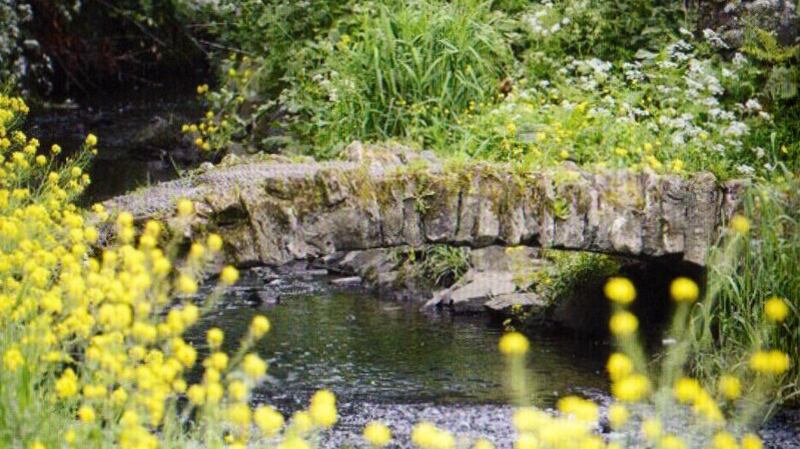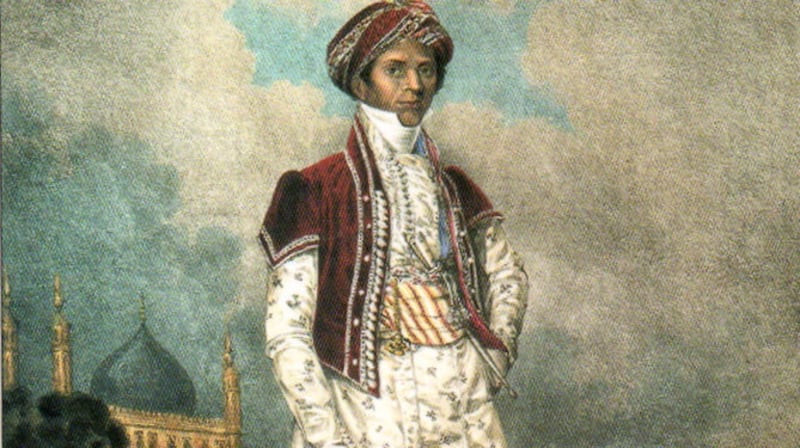This year marks the 1,500th anniversary of the birth of St Colmcille, better known to some as Columba or Columb. The Donegal landscape and coast features prominently in his life, and to commemorate the occasion the Journal of the Co Donegal Historical Society has produced a special Donegal Annual Columban Edition (No73, €25), edited by Seán Beattie.
Seventeen scholarly essays, two of them in Irish, illuminate the saint’s multifaceted sides, appraising him from angles such as holy man, diplomat and intellectual man of letters. The geographical and topographical nature of his life in Donegal is explored, from his birth at Gartan in AD 521 to the conundrum posed by Lochlann McGill as to whether he ever set foot in Glencolmcille.
Legends surround the saint, including the story recounted by Helen Meehan that near Mountcharles Colmcille cursed the inhabitants who refused to provide pounded whins to feed his horse, saying that whins would never again grow on the hillsides in the district. His connection to founding the monastery on Iona, the tiny island off Mull in the Inner Hebrides, is also discussed.
Another enigmatic name that has resonated through the centuries is Con O'Neill. In his biographical study, Con O'Neill: Last Gaelic Lord of Upper Clannaboy (White Row Press, £14.95), Roy Greer recreates the world of someone who saw the death throes of the Gaelic way of life and the birth of the Ulster-Scots tradition. The Clannaboy O'Neills controlled a large territory north and south of the river Lagan, and the story traces their rise to prominence.
A considerable amount has been written about the genealogies of the O’Neills of Tyrone, but much less about Con O’Neill of Castlereagh, although they were related. Theirs is a cluster of nicknames highlighted by distinguishing features such as “Brian the Freckled”, “Shane the Proud” or “Hugh the Lazy-arsed Boy”.
One of the pleasures of the book is an abundance of colour drawings, maps and woodcuts, as well as Con O’Neill’s 400-year-old signature preserved in the Public Record Office. Also included is a photograph of his narrow humpbacked stone footbridge in The Hollow in east Belfast, which the author suggests may be the most beautiful bridge in Ulster. With a small patch of cobbled paving on each side, it has been landscaped, ensuring his memory lives on not only through the bridge and the Connswater river but also through this handsome book.
Drawing on years of research, Brian Turner has produced Family Names in the Glens of Antrim (Ulster Historical Foundation, £19.99). The social significance of the names is considered through an examination of the distinctive north Antrim region which has enjoyed a significant historical link with southwest Argyll. Richly illustrated with surname maps and colour photographs, the book differentiates, through numerical strength, the more common names, especially MacAlister, MacAuley and MacDonnell, with a total index of surnames running to more than 400.
Turner sees the variety of the family names as pathways into the past, highlighting them as signs and heirlooms of the community, but also states that in the 21st century the internet and increasing sophistication of DNA analysis is helping sort out relationships. He is painting a picture, he emphasises, in broad brushstrokes, giving an impression of the elements in a whole community rather than specific family history.

For such intimate detail, 80 miles southwest of the glens in the Clogher Valley of Tyrone, some genealogical wizardry by Jack Johnston has turned up remarkable information about his family pedigree. The Johnstons of Aughendrummond and Annagarvey (£20) is the product of an unfolding paper trail over four decades, tracing the name through 10 generations and across four continents.
The vast majority of Johnstons who settled in the north came from Scotland, arriving at the time of the Plantation in 1610 or in the years that followed. They entered professions such as medicine, law or engineering. Some chose the church – the family produced six Presbyterian ministers – while others stayed to farm the land, but many emigrated. The author has scrutinised everything from ships’ manifests to marriage bonds, piecing them together with letters and archival records showing the diverse paths taken.
Like many families, there were squabbles and scandals, including a bigamy trial and a suggestion of a secret marriage. During the 1798 rebellion, political opinion differed fundamentally, with some family members criticising the government’s suppression of it while others took an opposing view.
Another perspective on the Plantation is recounted in Familia: Ulster Genealogical Review (Ulster Historical Foundation, No 36, £9.99), edited by Trevor Parkhill. This brings to life the story of a Catholic family in "John Makgee of Dumfries and his descendants in Tyrone". Written by Bill McGee and William Roulston, it explains how, under the patronage of Sir George Hamilton, a settlement of Scottish Catholics developed in the Strabane area in the early 1600s.
Makgee died in 1617 and is buried in one of the North’s oldest marked graves. But 13 years after his death, by 1630, the number of Catholic settlers so alarmed the Earl of Cork that he complained that “the Crown’s policy of planting civilisation and Protestantism in Ulster had not had the expected impact”. And the Protestant Bishop of Derry warned the Lord Chancellor of Ireland that Hamilton “had done his best to plant Popery there and brought over priests and Jesuits from Scotland”.
Other articles profile Bulmer Hobson, an Ulster Quaker Nationalist; the Bryson family of Co Down with links to 1798; and Sake Dean Mahomed, an Irish/Indian travel writer, curry entrepreneur and shampooer to kings in the early 18th century. In 2019 Mahomed achieved contemporary immortality when Google recognised him as one of their daily Doodle illustrations on their home page.

Jonathan Bardon's Place Names in Ulster (Ulster Historical Foundation, £9.99) is a new edition of a book investigating the derivation of land division, townlands and villages in all nine counties. While a large number of names derive from Irish Gaelic, the study also shows the importance of common Ulster names from Viking, Anglo-Norman, English and Scottish roots, placing them in historical context. From Newtowncunningham to Ballyhackamore and from Stranocum to Hungersmother, this is a dipping book par excellence.




















